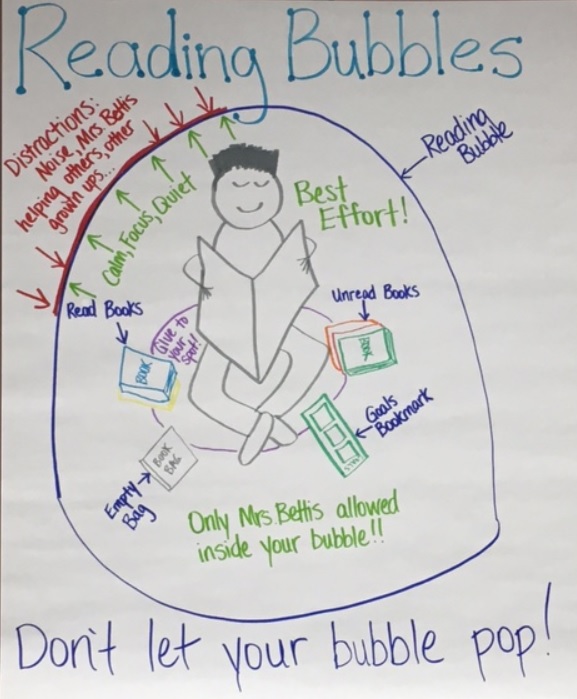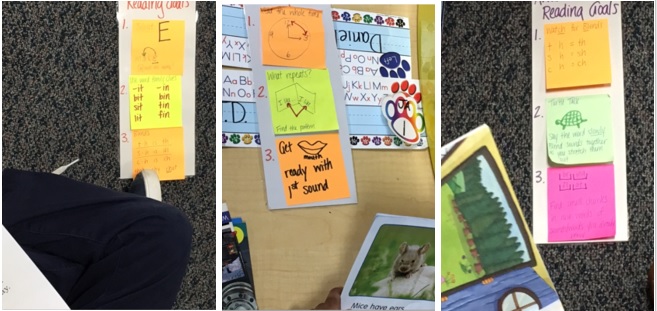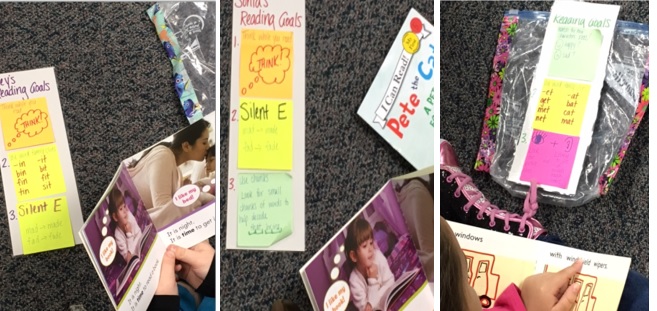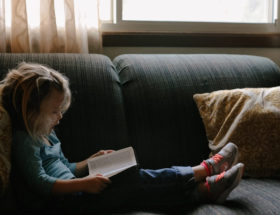This blog post was first published a few years ago. In the last two months, I’ve had the conversation about whether teaching kindergarten students to read is developmentally inappropriate at least a dozen times. Teachers worry that they are putting too much pressure on young kids to read too soon. It’s time to repost.
Recently our district raised the TRC (Text Reading and Comprehension) end of year kindergarten goal for our early reading assessment. Teachers have expressed concern over the fact that many of our youngest readers may not meet the requirement. Some have gone on to say that the expectation for our kindergarten students to read and comprehend at that elevated level is developmentally inappropriate.
I understand their frustration and fear.
In an NEA article, The Reading Rush: What Educators Say About Kindergarten Reading Expectations, Shyrelle Eubanks (senior policy analyst for NEA and a former kindergarten teacher in Maryland) is quoted as saying that children can do more in kindergarten. “It is not developmentally inappropriate to learn to read in kindergarten. It’s the approach that could be developmentally inappropriate.”
There’s much wisdom and veracity in that statement.
I could recount numerous alarming stories I’ve heard about ill-chosen practices in early reading instruction that qualify as developmentally inappropriate.
I could, but I’d rather not.
What I would like to do however, is to wholeheartedly affirm practices I observed in a kindergarten class I recently visited.
A Developmentally Appropriate Approach
Amy Bettis spent about 6 weeks coaching her kindergarten students to develop the stamina to sit for an extended amount of time reading short texts. She modeled for her kids and provided an anchor chart to guide them in understanding reading practices. They know that sitting in their own spot and creating a reading “bubble” will help to create a space for them to grow as readers. In the beginning they tried out their reading spot for a few minutes at a time and increased the amount of time little by little over the initial six-week “training” period.

It’s January and Amy’s students are reading 15-18 minutes without the constant need for redirection. The procedures for independent reading time are firmly in place. Amy’s students are so capable of reading quietly on their own that she is able to move about the room conferring with students and making notes.
Amy has a system for book shopping that allows students to make choices for their book bags. Students gather several books on their instructional level, but are also free to add texts that fall above and below their reading level. Choice and interest play a critical role in Amy’s weekly “book shopping” process.
Because Amy’s students know the three ways to read a book they are well-prepared to navigate any text in their book bag whether it’s on their “level” or not. If they’re able, they read the words, if not they read the pictures or simply retell the story.
Individual Reading Goals
Students in Amy’s class know that they’ll be using strategies to read accurately, fluently and with the ability to make meaning of the text. As a result of conferring with her students regularly, she is able to help her young readers set goals. Amy used what she learned from Jennifer Serravallo’s The Reading Strategies Book. Each student has a bookmark with three reading goals that guide their practice as they read.
It’s interesting to note that some students have goals that are not exclusively instructional. Several had goals that helped them to remember behavior expectations that support them as they worked to maintain their reading “bubble”.


Careful, intentional planning, with a strong commitment to routines that nurture young readers has resulted in developmentally appropriate practices in Amy’s classroom. She is fully aware of the end of year goal for her students and knows that data will be collected, analyzed and reported. Student achievement is a high priority.
But Amy is far more concerned with growing a community of readers.
And it’s working.











I love this post. It came in handy right about the time my kinder teachers were feeling beat down by the MOY reading scores. We are there- reading stamina- but the reading strategies prove that individual conversations and intervention are happening between teacher and student. These are the things that will take students to the next level as readers.
It was an inspiring visit for me and I’m not even in the classroom any longer. What a treat to observe other teachers who’ve figured out solutions to troubling issues. Thanks for the comment!
I am looking forward to ordering this book for my school district and reading team 🙂
Thanks for such a great post…my first baby is in kindergarten and I am blessed that he is reading comfortably and confidently, but I wonder about the expectations as well and wanting to make sure there is always a love of reading…Hearing his little voice decode sounds and blend words is truly one of the most magical moments for me as a mommy 🙂
ps- Love Nerdy Book Club too 🙂
Thank you, Larissa for sharing your personal connection. Teaching kindergarten is one of the most magical pursuits. So much learning happens in one year 🙂 Sending hugs to your kindergarten “budding” reader 🙂